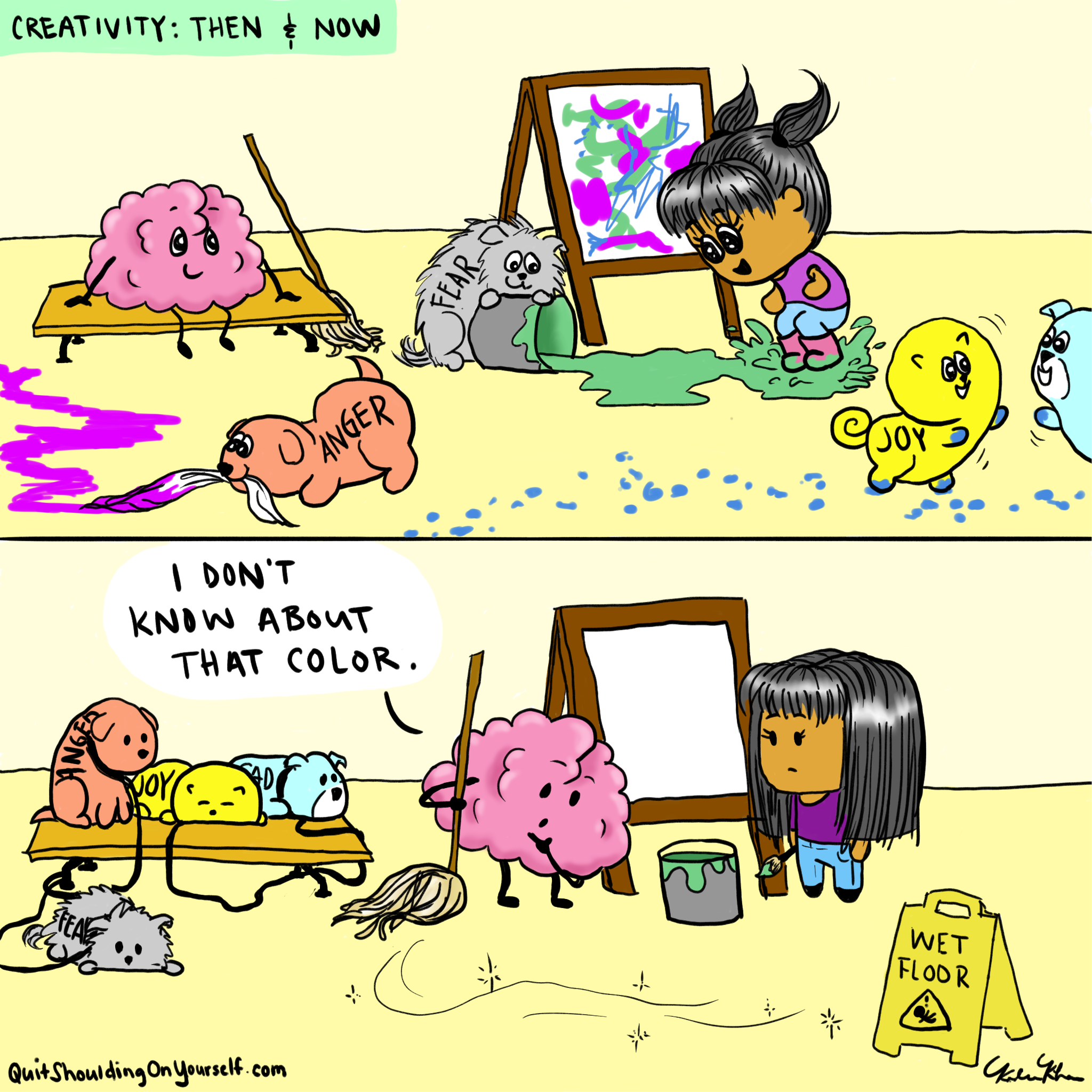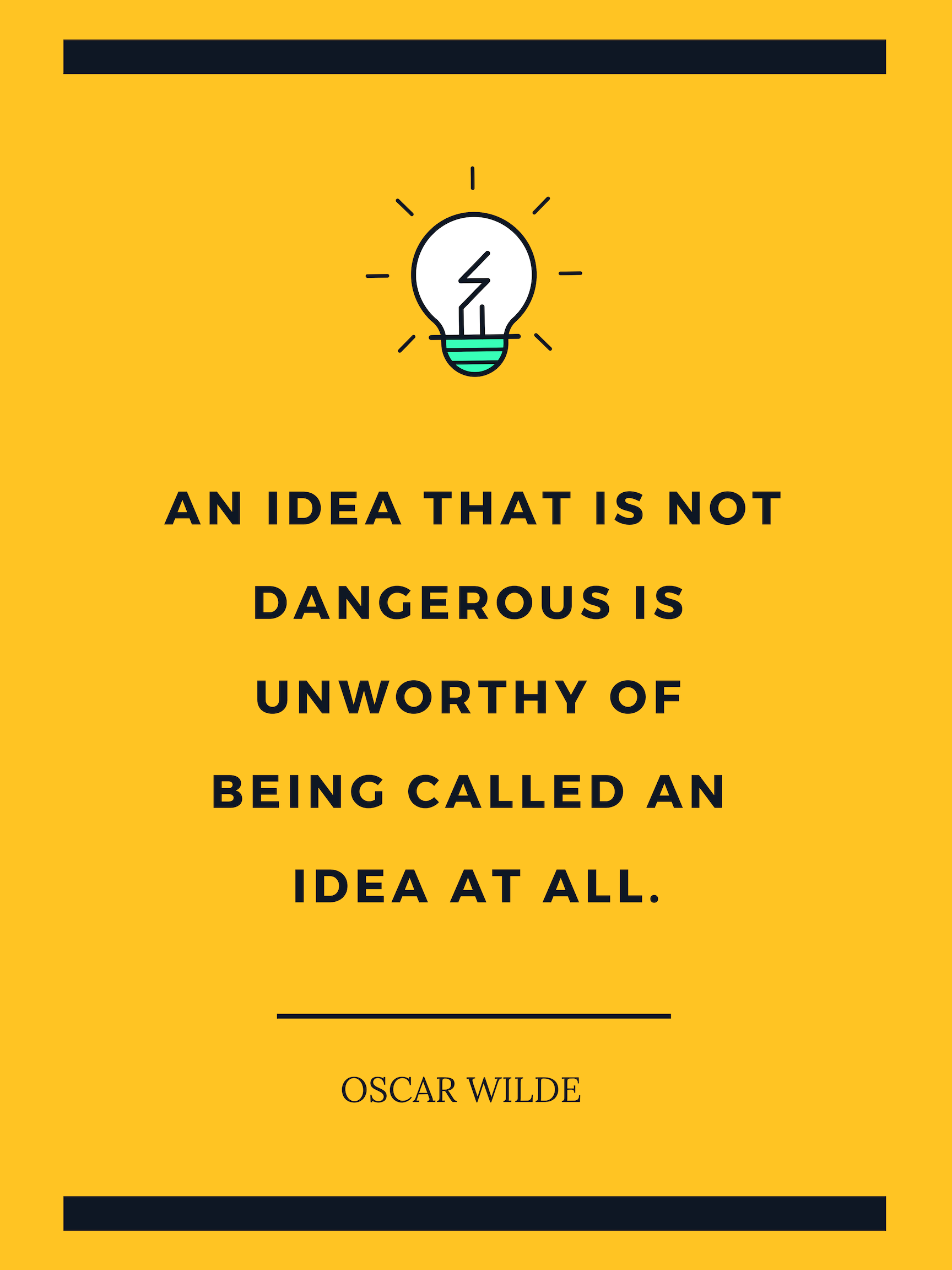My 4-year-old son is sitting in the other room right now painting 3D dinosaur toys. Some of them he painted multiple colors, others he used only blue. Some of them he covered with paint, and others he left halfway done. Sometimes he would dip his paintbrush neatly into one color, rinse, and dip into another. Other times he would take his brush and dunk it into each paint cup back to back, no rinse. Just to see what would happen. When he stepped back and looked at his handiwork, he was incredibly proud of himself. As he admired it, he tilted his head with huge smile, and called out to his dad in his high-decibel, excited voice, “LOOK AT HOW COOL, DADDY!!!!” Everything about this experience for him was complete curiosity and creativity.
When I lead art therapy sessions with clients, I always make sure to mentally and emotionally prepare them. Otherwise, I would end up with a room of frustrated adults who feel much worse about themselves than they did at the beginning of the art activity. Why is this? Unlike children, we have learned how to judge ourselves very efficiently, especially when it comes to creating art. I frequently hear, “I’m not good at this stuff” or “I’m not an artist”, while this thought doesn’t even cross a child’s mind. It’s not a matter of being good at it, or making art the way it ‘should’ be done. They just do it for the sake of doing it. Something about it centers them. They feel willing to immerse themselves into creativity without questioning themselves, without guilt, without overthinking or self-evaluating.
Children are much better at letting their emotions guide them when being creative, and putting logic on the sidelines. This is pure self-expression. Adults struggle with this, and feel compelled to make logic to drive them, while emotions take a backseat. This is pure inhibition.

Our inhibitions are helpful. I mean, who wants to see a world full of adults acting like preschoolers 24/7? (Well, I’d like to see that, but functionally, it’d be a disaster.) I don’t want to discredit our logic. I also believe that we have collectively fallen out of practice of uninhibited creativity, and it’s something worth re-learning, especially if you strive to take your inner critic less seriously. An emotionally expressive creative space is where our inner critic’s voice will always speak up, giving you an opportunity to practice relating to it differently. Just as practicing a sport strengthens areas in your brain that relate to that sport, you can strengthen that mental muscle that’s able to shrug off your critic’s harsh words. This opens the door to other essential human experiences:
Self Awareness
When it comes to creating, you get to embrace your curiosity, which naturally guides you to discover and revel in your interests, passions, and values; things that are necessary for having a sense of identity outside of being “the person who works as a ___”. Self-expression is the ability to explore and share who YOU are, not just your roles or achievements.
Self Acceptance
Often when we consider creating something new (a piece of art, an original written piece, a business…), our mind floods us with reasons why it’s too weird of a thing to do: What would so-and-so say if you did that? That’s stupid. Don’t be childish. You’re not ___ enough. What if you fail?
The act of acknowledging your inner critic, shifting your focus from all those “shoulds,” and intentionally giving yourself permission to create what’s in your heart exercises your brain. You’re practicing nonjudgement. You’re practicing self acceptance. And what you practice grows stronger.
Life balance
What do you envision “work-life balance” to be? Maybe you see yourself spending more time with family, taking a vacation, taking up yoga, etc. Often the thing in the way is an urgency to complete a long mental to-do list. The opposite of focusing on the future to-do’s is to be the moment. Creativity forces you to get sucked into the present moment, and this is another muscle that gets stronger with practice. You’ll never prioritize those life balance goals until you feel comfortable with the idea of being in the moment instead of being in your head.
So what are some ways you can relearn uninhibited creativity? Make an art piece (anything from scribbling in a coloring book to painting a mural). Do a little dance to a song you’re listening to while puttering around the house. Write a journal entry even if you won’t keep up with it regularly. Mix two foods on your plate together to see what the combination tastes like. Step outside of the house without a plan on where you’re going. There aren’t too many limits on the possibilities.
Whatever it is you choose, consider these guidelines for practice:
1. Let yourself be guided by what you feel like doing in that particular moment, not what you think you should do. I mean, literally, in that fleeting moment. “Hm, what color pencil do I feel like picking up at this very moment?” When you pick one, don’t wonder why. Just choose.
2. Don’t hesitate. Just pick up a brush and paint. Just pull out your laptop and start typing. Just pick a song and move to it. Just a few seconds of hesitation gets the logical mind to perk up and think that you need its assistance. Keep it on the bench for this play and move faster than it can think.
3. Admire what excites you. Don’t water down your appreciation of what you like, or let it be overshadowed by what you like less. Don’t base your appreciation off of what other people might like about it. Refer to yourself. Your own experience. Did you feel a tinge of joy or release, even for a second? Acknowledge that moment and what it feels like. Draw attention to it with curiosity.
4. Break rules. I once heard someone refer to ‘brainstorming’ as a time when ‘anything is allowed on the table, even the outrageous ideas’. I fell in love with brainstorming once I heard this. I was just given permission to put any outlandish, silly, strange idea on the table and it would be fine! It felt freeing. I felt especially free from feeling the need to listen to what my inner critic had to say.

5. Let your inner critic observe, and even comment. Let that all happen in the background while you do what you want to do anyway. If you ever heard an annoying song you couldn’t turn off, it makes it worse to actively focus on ignoring it. It draws more attention. Let your inner critic’s voice play in the background. You don’t have to argue with it. Just allow it to chatter while you go about your business.
6. Save evaluations for after you’re done. Your logical mind will be itching to get off the bench by the end of your creative streak. Give it its time and invite its evaluations, but only give it your full attention when its language reflect kindness and curiosity. “I had picked up the blue colored pencil at the time, and now I see it’s all over my paper. What might this say about me right now?” You don’t have to give much attention to the, “Nobody would put this on their wall” comments.